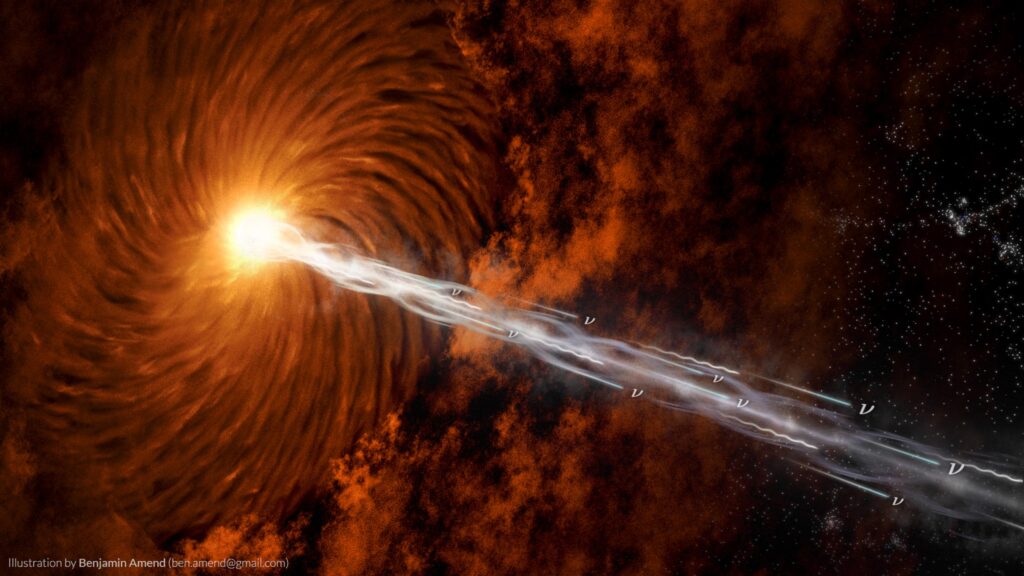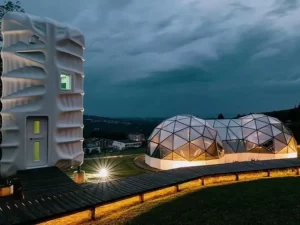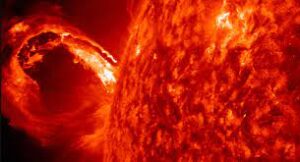
Neutrino Factories in Deep Outer Space: Elementary Particles From the Depths of Our Universe
The atmosphere of our planet continues to be bombarded by cosmic rays. It consists of electric charged particles with very high energy – up to 1020 volt electrons. As a reference, it was a million times more than the energy achieved in the strongest particle accelerator in the world, Cern’s Large Hadron Collider near Geneva. Very energetic particles originating from outer space that have traveled billions of light years. Where did they come from, what shot them through the universe with extraordinary power? These questions remain the biggest challenge of astrophysics for more than a century.
The birthplace of cosmic rays produces neutrino. These neutral particles are very difficult to detect. They almost have no mass and barely interact with material. They are racing through the universe and can travel through galaxies, planets, and human bodies almost without traces. “Neutrino astrophysics is produced exclusively in a process involving the acceleration of cosmic ray,” explained Professor of Astrophysics Sara Buson from Julius-Maximilians-Universität (JMU) Würzburg in Bavaria, Germany. This is precisely what makes this unique neutrino messenger open the way to determine the source of cosmic ray.
Steps forward in controversial debate
Apart from a large amount of data collected by astrophysics, high-energy neutrino relationships with astrophysical sources originating from them remain a problem that has not been solved for years. Sara Buson always considers it a big challenge. In 2017 that researchers and collaborators first brought a blazar (TXS 0506+056) into the discussion as a source of potential neutrino in the journal Science. The blazar is the core of an active galaxy powered by a supermasi -black hole that emits more radiation than their entire galaxy. The scientific debate was triggered by publications about whether there was a relationship between blazar and high-energy neutrino.
Following this encouraging first step, in June 2021 Prof. Buson started an ambitious multi-messenger research project with the support of the European Research Council. This involves analyzing various signals (“messengers,” eg neutrino) from the universe. The main goal is to explain the origin of astrophysical neutrino and may form a blazar as the first source of high -energy neutrino extracts with high certainty.
This project now shows its first success: in the journal Astrophysical Journal Letters, Sara Buson, along with his group, former postdoctoral researcher Raniere de Menezes (JMU) and Andrea Tramacere from the University of Geneva, reported that the blazar could be attentive to concern to Neutrino Astrophisics at the level Certainty that has never happened before.
Reveal the role of blazar
Andrea Tramacere is one of the experts in the numerical modeling process of acceleration and radiation mechanisms that work in relativistic jet – the release of accelerated material, close to the speed of light – especially the blazar jet. “The process of accretion and rotation of the black hole leads to the formation of relativistic jet, where particles are accelerated and emit radiation to the energy of a thousand billion light visible! The discovery of the relationship between these objects and cosmic rays may be ‘rosetta stone’ from high-energy astrophysics! “
To arrive at this result, the research team used Neutrino data from Icecube Neutrino Observatory in Antarctica – the most sensitive neutrino detector currently operating – and BZCAT, one of the most accurate blazar catalogs. “With this data, we must prove that the blazar whose direction positions coincide with neutrino does not exist by chance.” To do this, Unige researchers develop software that is able to estimate how much distribution of these objects in the sky looks the same. “After rolling out a dice a few times, we found that random associations can only exceed very real data in a million trials! This is a strong evidence that our association is true. “
Apart from this success, the research team believes that the sample of this first object is only the ‘tip of the iceberg’. This work has allowed them to collect “new observation evidence”, which is the most important material for building a more realistic astrophysical accelerator model. “What we need to do now is to understand what is the main difference between objects that emit neutrino and those who don’t. This will help us to understand the extent of the environment and accelerators ‘talk’ to each other. We will then be able to put aside several models, increase the predictive strength of others and, finally, add more pieces to the eternal puzzle of the cosmic ray acceleration! “
Reference: “Starting the journey across the universe: the discovery of the Extra -Transaction Neutrino Factory” by Sara Buson, Andrea Tramacere, Leonard Pfeiffer, Lenz Oswald, Raniere de Menezes, Alessandra Azzollini and Marco Ajello, 14 July 2022,








